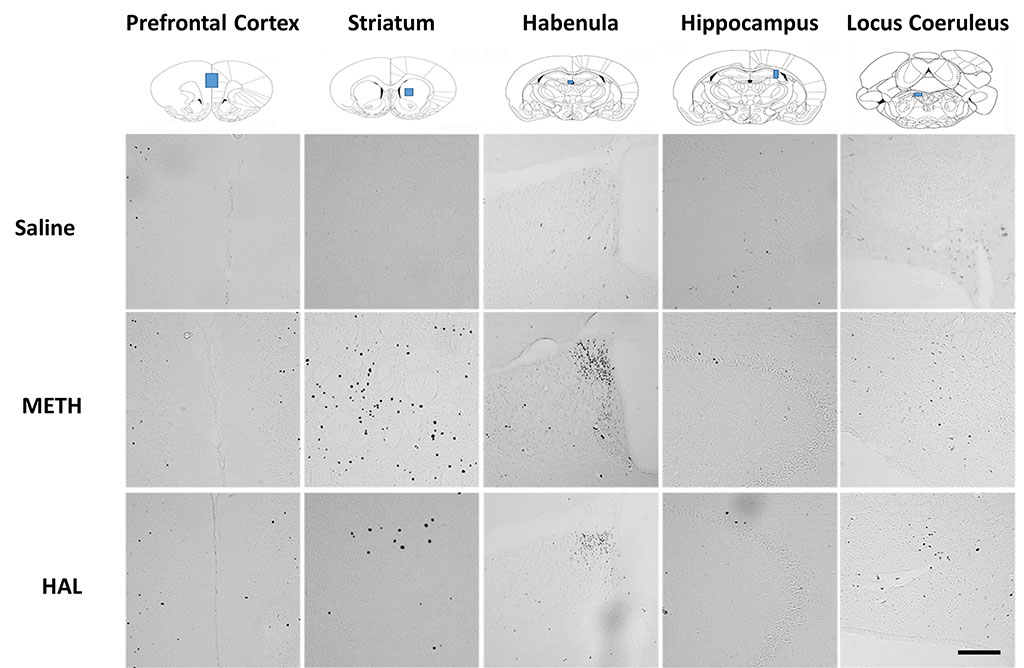Background | Status & Availability | Transgene Info | Phenotypic Characterization | Breeding | Genotyping | References | Blog/Comments/Reviews | Related rats | Acknowledgements
Background
The LE-Tg(cFos-LacZ)1Ottc rat is a reporter rat designed to express the beta-galactosidase gene (LacZ) in cells that are “activated” to express the immediate early gene Fos. This rat was made by injecting a previously described DNA construct (Schilling et al 1991 PNAS; map shown below) into fertilized eggs from Long Evans rats. Founders with randomly incorporated transgene were screened for LacZ expression. This transgenic rat line can be compared to Fos-LacZ rats described by Kasof et al 1995 Brain Res Mol Brain Res. The rat described by Kasof et al was made on Sprague-Dawley background whereas the rat described below is on a Long Evans background. Previous work by Dr. Bruce Hope using the Kasof et al “Fos-LacZ” rat demonstrated that recently activated, Fos-expresssing neurons could be lesioned by injecting a prodrug, Daun02, that is converted to toxic drug by beta-galactosidase, into brains of Fos-LacZ rats.
Status and Availability
This strain has not yet been published.
As of March 1, 2017, this strain is available as line #00759 at the RRRC.
This rat is registered at the Rat Genome Database (RGD) # 9588581.
Transgene Information
Figure 1. The schematic of the cFos-lacZ transgene. The mouse cFos promoter as well as the first 4 exons of the cFos transcript were translationally-fused to beta-galactosidase followed by the 3’ untranslated region of cFos. This fragment was liberated from the plasmid “c-fos-LacZ” (a gift from Dr. Tom Curran, St. Jude’s Research Hospital  ) using HindIII and KpnI restriction enzymes, and then injected into pronuclei of fertilized Long Evans rat embryos by NIMH Transgenic Core. The copy number and integration site(s) have not been characterized for LE-Tg(cFos-LacZ)1Ottc.
) using HindIII and KpnI restriction enzymes, and then injected into pronuclei of fertilized Long Evans rat embryos by NIMH Transgenic Core. The copy number and integration site(s) have not been characterized for LE-Tg(cFos-LacZ)1Ottc.
Phenotypic Characterization
Figure 2. Activation of Fos expression as indicated by X-gal staining of cFos-LacZ1 brains. Representative sections from 4 brain regions of LE-Tg(cFos-LacZ)1Ottc rats are shown (top row; images from The Rat Brain, 4th edition Paxinos and Watson). The LE-Tg(cFos-LacZ)1Ottc rats were injected i.p. with saline, 2.5 mg/kg methamphetamine (METH) or 1 mg/kg haloperidol (HAL). Animals were placed into home cage for two hours then perfused with 4% PFA, post-fixed for 1hour, brain sections were cryosectioned (40μm) and stained for beta-galactosidase activity (representing Fos promoter activation) using X-gal histochemistry. Scale bar is 100 μm. Download print resolution version here.
Experiment by Bruce Hope, YaJun Zhang and Brandon Harvey (NIDA IRP)
Additional phenotypic characterization is recommended for brain region and experimental paradigm of interest.
Breeding Strategy
Breeding Information, click here for PDF
Genotyping Assays
Assay for the presence of LacZ, click here for PDF
References that cite this rat
No references are available at this time.
Blog/Comments/Reviews
Last Updated on November 12, 2024
No comments or reviews are available at this time.
Other related rats
The “Fos-LacZ” rat was described by Kasof et al 1995 Brain Res Mol Brain Res was generated on a Sprague Dawley background. As with the LE-Tg(cFos-LacZ)1Ottc rat described herein, the transgene was randomly integrated into the genome of the Fos-LacZ rats.
Acknowledgements
Brandon K. Harvey, Christopher T. Richie, YaJun Zhang, Bruce T. Hope and Janette Lebron


